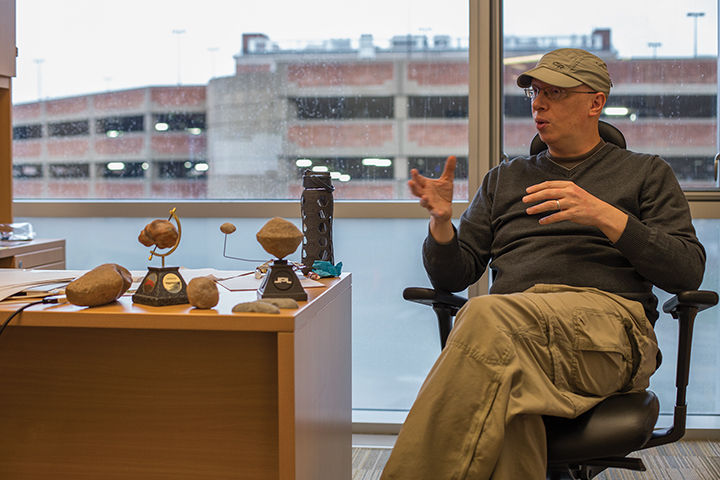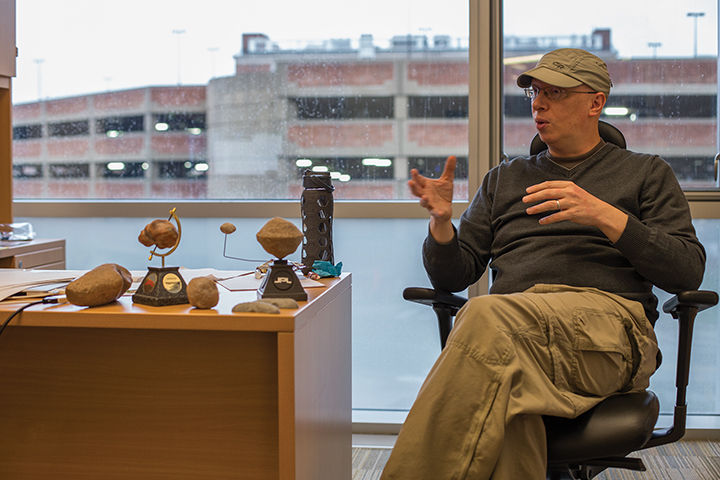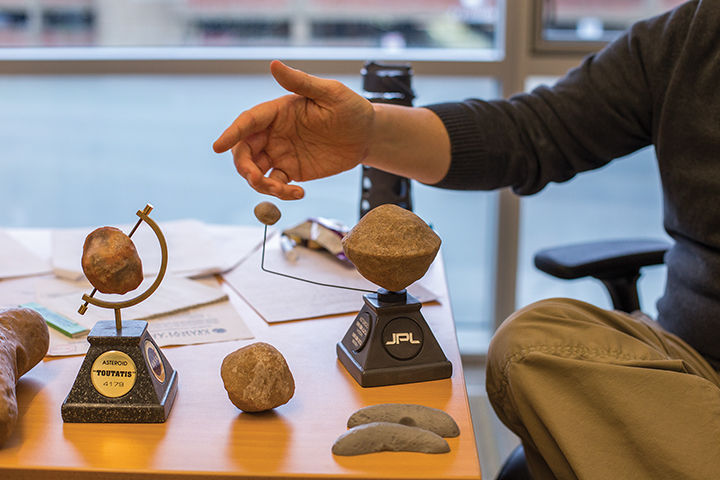There’s a good reason why the Apophis asteroid is named after the Egyptian god of chaos, Apep, the Uncreator, a cosmic snake who could supposedly devour the Earth.
If this asteroid, which is longer than three football fields, struck this planet, the destruction would be considerable. It’s not big enough to cause a mass extinction event, but it would create tidal waves and terror across whole continents, and it might even change the world’s climate for years.
Apophis won’t hit Earth, but it will have a near-miss in 2029. University researchers said its proximity could give scientists a chance to study asteroids up close, which might provide insight into preventing future asteroid collisions.
In fact, in a study published this month in the astronomy journal Icarus, astronomers found the most destructive effect of Apophis’s approach will probably be landslides on the surface of the asteroid itself. And even those, they found, could offer an opportunity for further study.
“If an asteroid happens to fly by a planet, we can measure what happens to it, and we can understand more about the structure of these asteroids,” said Derek Richardson, a university astronomy professor and co-author of the study. “Apophis will potentially provide that for us.”
Though it might seem like one giant space rock, Richardson said, there is reason to believe an asteroid is actually a collection of much smaller rocks, loosely bound by gravity and rocketing through space together.
Astronomers have observed a strange phenomenon by which near-Earth asteroids appear to be less weathered by space travel than their more distant counterparts, which might suggest that the planet’s gravity causes a shuffle among the asteroid rocks. Old, weathered rocks slide and turn over in the gravitational pull, which might make the asteroids appear “fresher,” Richardson said.
Apophis will come very close — about six Earth-radii away from our planet, Richardson said, which is about one-tenth as far away as the moon and closer than many artificial satellites — but it probably won’t come close enough for this kind of surface restructuring to occur.
Instead, the Earth’s gravity will pull on one side of the asteroid more than the other, said Ronald Ballouz, another co-author of the study. Similar to how the moon’s pull causes tides in the Earth’s oceans, this gravity will cause minor avalanches of small rocks on part of Apophis.
Researchers tested the way these particles would likely move by collecting local rocks and measuring how they dispersed, said Ballouz, an astronomy doctoral candidate at this university. They then simulated the phenomenon, factoring in the friction of the rocks and the degree of gravitational force.
When Apophis does pass by in 2029, researchers might send seismic sensors onto the asteroid to confirm these findings, Richardson said. He added that landing on an asteroid might be the next step to landing on Mars.
As far as learning how to prevent collisions with future asteroids, Richardson said trying to knock one out of Earth’s path with nuclear weaponry would probably backfire.
“If it’s already broken up into pieces, you can understand that breaking it up more probably isn’t going to help,” he said, comparing the action to shooting a bullet into a sandbag, which would only absorb the blow. “We need to understand what the best deflection strategy is, and it’s not blowing them up. It’s finding a way to push them aside.”
Douglas Hamilton, an astronomy professor at this university who was not involved in the study, said this kind of research, which looks at the structure of asteroids, can help scientists find new ways to think about deflecting asteroids.
“In the next 20 years, if something were to come to hit us, there’s not much we can really do,” he said. “But given 50 or 100 years, then we’ll know so much more about asteroids — through studies like this one — what they’re made of, how they react to being pushed, and we’ll actually be able to push things out of the way, probably 50 years from now.”
Apophis is the biggest asteroid on the horizon for the near future, and though it looks like it won’t collide with Earth in 15 years, Hamilton said there’s a possibility it could hit our planet, or miss the Earth even more narrowly, when it comes by again in 2036. The likelihood of this, however, is “very tiny,” he said.
Though chances favor Apophis’ eventually meeting Earth, humans living today probably don’t need to worry about it.
“It will probably hit the Earth in the next 10 million years,” he said.
Astronomy professor Derek Richardson runs numerical simulations of small astronomical bodies and collisions on a project studying the approaching asteroid Apophis.





